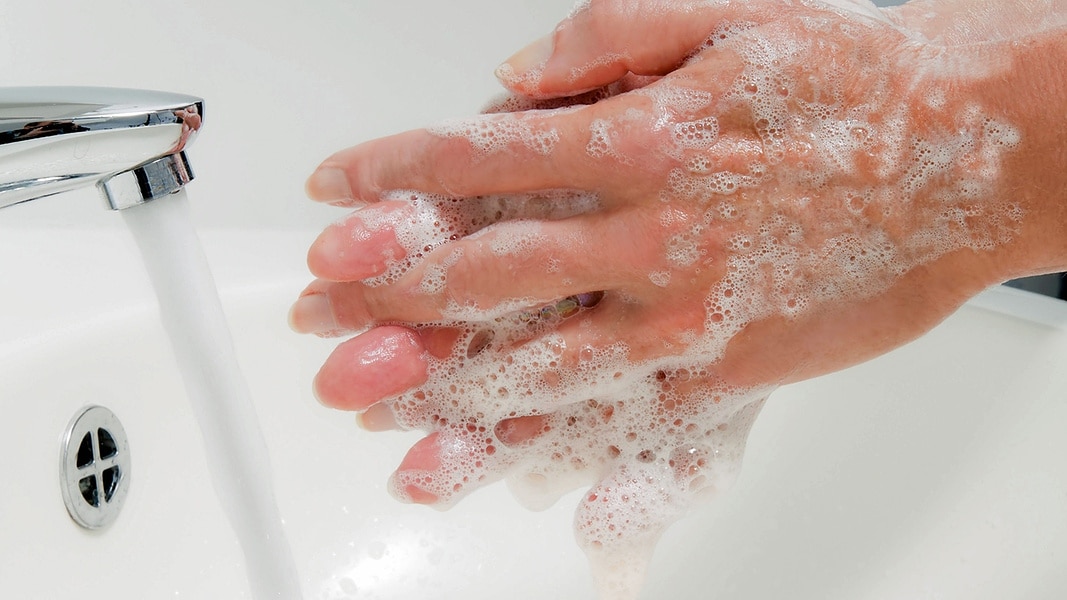Status: 07/27/2023 10:10 a.m
Germs and bacteria can be found everywhere in the home. With the right cleaning and a few tips and tricks, pathogens don’t stand a chance. What should be considered in terms of hygiene?
Many people consider bacteria and germs to be dangerous. They are among our constant companions: on the skin, in the air, on every object. Most microorganisms are beneficial to humans and completely harmless, but some can cause disease. People with a weakened immune system are mainly at risk. Simple rules help to ensure the necessary hygiene in the household.
Wash hands: Bacteria migrate from person to person
Most germs are transmitted from person to person via the hands – either directly or indirectly, for example via door handles or handles. Therefore, you should wash your hands thoroughly in the following situations:
before preparing meals before eating after contact with sick people after contact with animals after going to the toilet
Normal cleaning agents are sufficient
A household cannot and does not have to be germ-free. Anyone who cleans with conventional means ensures appropriate hygiene, disinfectants are unnecessary. They can harm health and pollute the environment. Even antibacterial products such as cleaners and cloths offer no advantage in everyday life. However, there are areas in which particular attention should be paid to cleanliness.
Recipe for an all-purpose cleaner:
Ingredients:
30 g washing soda
250ml of water
60 grams of washing-up liquid
optionally 20-30 drops of essential oil
60 ml vinegar essence (25%)
1.75 liters of water
Preparation:
Mix soda with about 250 ml water in a saucepan and bring to the boil. Remove the pot from the stove, add washing-up liquid and, if necessary, oil and stir. Stir in vinegar essence. Then fill up with about 1.75 l of water and mix well again.
Pour the finished cleaner into suitable containers and label them. Always shake before use. The cleaner is suitable for almost all surfaces except for marble, but be careful with wood, laminate or cork. For tiled floors, add a shot of cleaner to the mopping water. In the case of heavy soiling, allow the cleaner to take effect.
(by Yvonne Willicks)
Hygienic work in the kitchen
When eating, harmful germs can easily enter the body if there is a lack of hygiene. Kitchen sponges and floor cloths are particularly problematic. Bacteria multiply quickly in the damp material and are transferred to other objects the next time the wipes are used. Therefore, hang up kitchen towels to dry after use and wash them regularly in the washing machine at 60 degrees with a heavy-duty detergent containing bleach.
Other important hygiene rules in the kitchen:
Prepare raw meat and raw fish on plastic boards, which are then washed hot, preferably in the dishwasher. Do not use boards and knives for other work without cleaning them in between. Store food and food in closed containers in the refrigerator. Thaw frozen food in a bowl , then clean the bowl hot store raw meat in the lower, colder area of the refrigerator and prepare it soon (danger of salmonella)
Hygiene in the toilet
Bacteria that are harmful to other people usually live in the human intestine. However, with normal use of a toilet, the risk of transmission is very small. Prerequisite: The toilet is cleaned regularly with standard bathroom or household cleaning products. Then wash your hands thoroughly. Disinfectants only make sense if someone in the household suffers from a contagious gastrointestinal infection with diarrhea. Then dose the agent exactly according to the instructions for use and apply it specifically to the toilet seat, the flush button and the water tap.
Fresh air prevents mold
Mold that is harmful to health can develop, especially in damp rooms such as the bathroom and kitchen, but also in the bedroom. Regular airing prevents this. The website of the Federal Center for Health Education also offers further tips about hygiene in the household.
Color system: assign cleaning rags to fixed areas
For hygienic cleaning of the various living areas, it is advisable to use cleaning rags and sponge cloths according to a fixed color scheme. For example, a cloth in the signal color red should only be used for the toilet. Green can be used in the kitchen, yellow in the bathroom for the shower, sink, tiles and mirror, and blue for surfaces in the living area such as doors, chairs, tables or shelves.
Household expert Yvonne Willicks advises rinsing off all cleaning cloths with hot water after use, wringing them out and drying them and washing them regularly in the washing machine.
Further information
Inexpensive home remedies often help against dirt better than expensive special cleaners. How do you clean tiles, ovens and windows? more
Tap water leaves unsightly limescale deposits in the home. Two home remedies help: Vinegar and citric acid. more
Environmentally friendly, inexpensive, versatile: Soda removes stubborn dirt in the household and is also suitable for washing. more
After some time, many washing machines start to smell bad. These tips will help prevent the stink. more
A lot of dirt has settled on window panes in winter. In this way, the panes quickly become clean and clear again. more
This topic in the program:
07/21/2023 | 6:45 p.m
